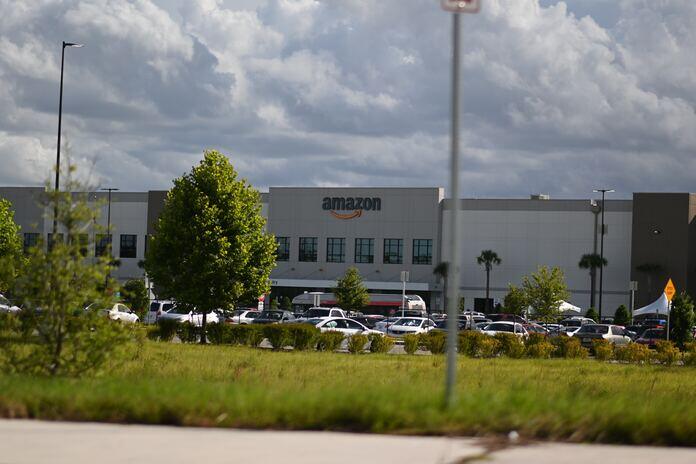As the second quarter earnings season is in full swing, investors are eyeing tech giants like Amazon (NASDAQ:AMZN), Alphabet (NASDAQ:GOOG), Microsoft (NASDAQ:MSFT), and Meta Platforms (NASDAQ:META) as they prepare to release their earnings reports next week.
Tech stocks have made a significant rebound in 2023, with the technology sector becoming the best-performing sector in the S&P 500 (SPY). This marks a dramatic turnaround from its performance as the worst-performing sector in 2022. Interestingly, the tech-heavy Nasdaq index (QQQ) experienced declines in all four quarters last year for the first time since the dot-com bubble burst over two decades ago.
Amazon Stock Performance
Amazon stock faced challenges in 2022, leading to a loss of nearly half of its market cap and underperformance in comparison to the markets. However, signs of underperformance started in 2021 when Amazon recorded a meager gain of 2.4%, while the S&P 500 surged by almost 27%.
During the tech crash of 2022, Amazon made history as the first company to lose over $1 trillion in market cap. In July 2021, the company’s market cap approached $1.9 trillion, raising expectations for Amazon to join the elite $2 trillion market cap club, alongside companies like Apple (NASDAQ:AAPL) and Microsoft.
The massive tech sell-off in December 2022 briefly pushed Amazon, Meta Platforms, and Tesla (NASDAQ:TSLA) out of the $1 trillion market cap club. However, both Meta and Tesla have experienced significant growth in 2023, with Meta being the second-best-performing stock in the S&P 500 this year.
Amazon has shown an impressive rally in 2023, with its market cap currently around $1.3 trillion. In the FAANG group, only Apple has achieved new highs in 2023, while the other constituents are still far from their all-time highs, despite recent gains.
Concerning Amazon’s financial performance, the company experienced a 9% increase in sales in 2022, which was the lowest since going public. Specifically, Amazon Web Services (AWS) revenues rose by 29%, which was also the lowest growth rate since the segment’s revenue reporting began.
AWS revenue growth has been declining over the last few quarters, reaching a new all-time low of 16% in Q1 of 2023. During the Q1 2023 earnings call, Amazon’s management expressed concerns about the business and attributed the slowdown to “ongoing economic uncertainty.” Amazon’s CFO, Brian Olsavsky, mentioned that customers are evaluating ways to optimize their cloud spending in response to tough economic conditions in the first quarter.
In 2022, Amazon faced challenges beyond topline growth, as its operating income declined by over 50% to $12.9 billion. Only AWS posted an operating profit, while both the North American and International segments incurred operating losses.
Additionally, Amazon reported negative free cash flows of $11.6 billion in 2022 and $9.1 billion in 2021, contributing to the crash in its stock price.
Despite these setbacks, analysts believe that Amazon stock still holds the potential for decent long-term returns. The company boasts an enviable ecosystem, dominating multiple high-growth industries. As the largest e-commerce company in the US and a leader in the cloud infrastructure market, Amazon holds a competitive advantage. Furthermore, its Prime subscription service drives revenue and improves customer loyalty.
Amazon’s logistics network also remains a strength, and its lesser-known advertising business generated significant revenues in 2022. Moreover, the company’s efforts to control costs, including workforce reductions, are expected to boost its earnings. Wall Street analysts are bullish on Amazon, with a majority rating the stock as a Strong Buy and projecting an expected target price higher than the current stock prices.
As with any investment decision, caution is advised, and investors should conduct thorough research and consider their own risk tolerance before making any choices regarding Amazon’s stock.
Featured Image: Unsplash















